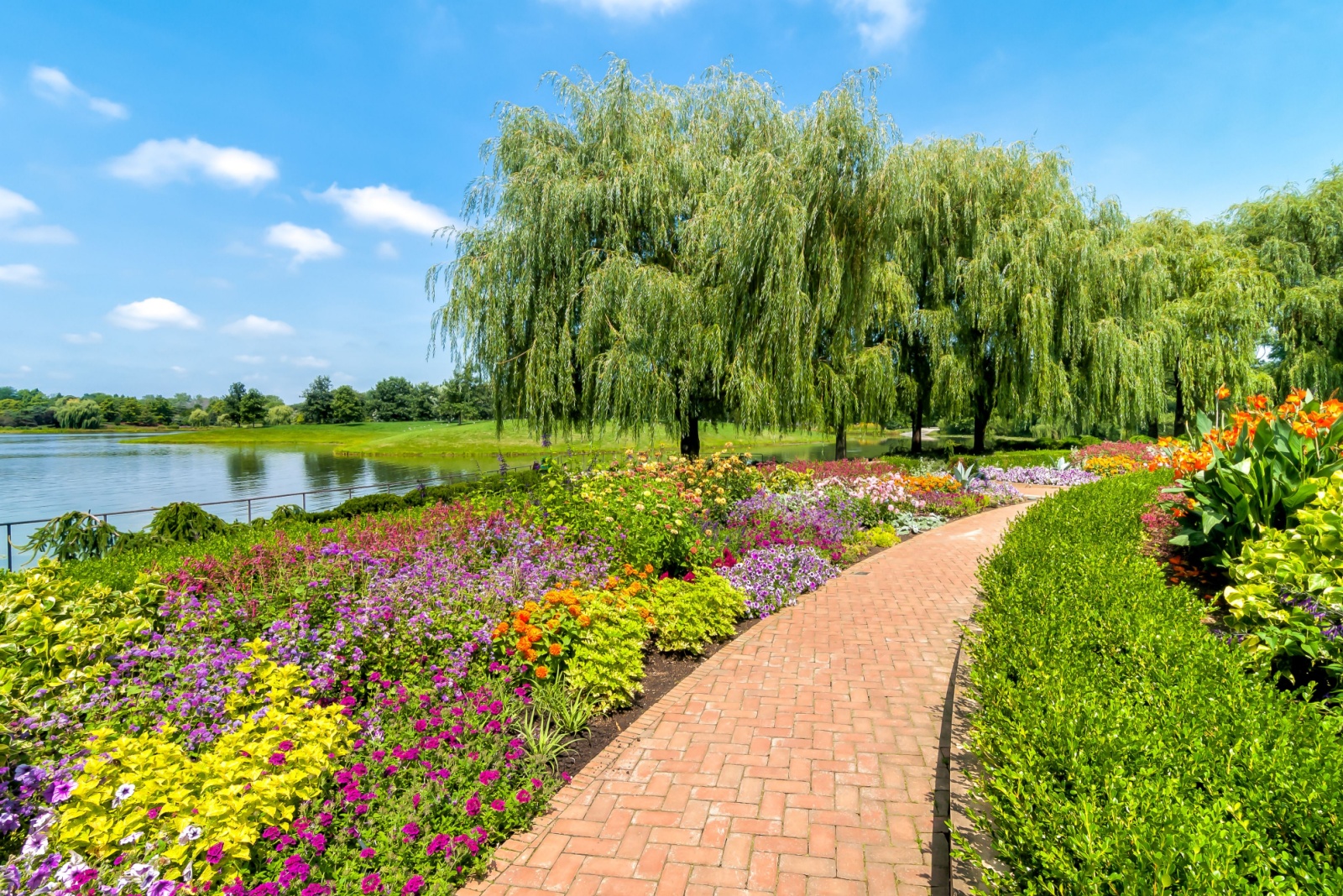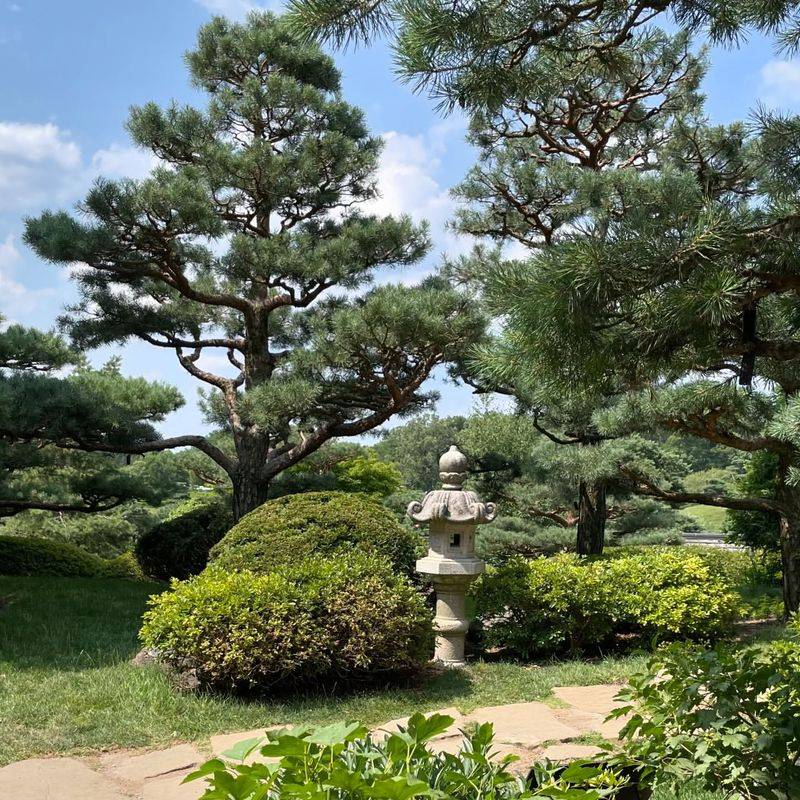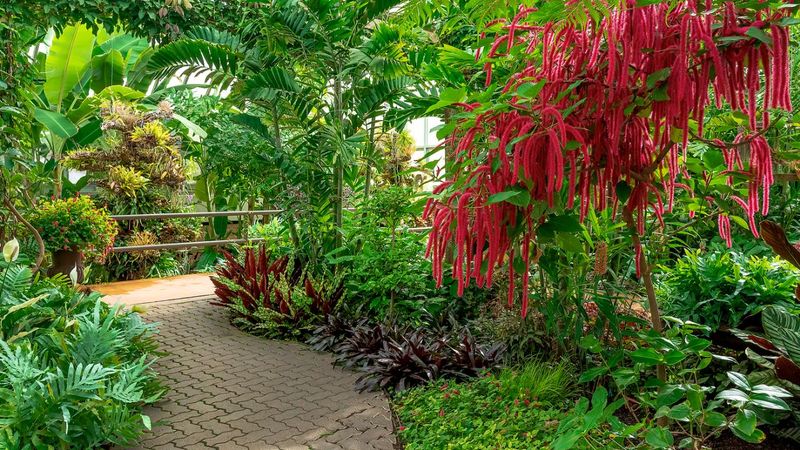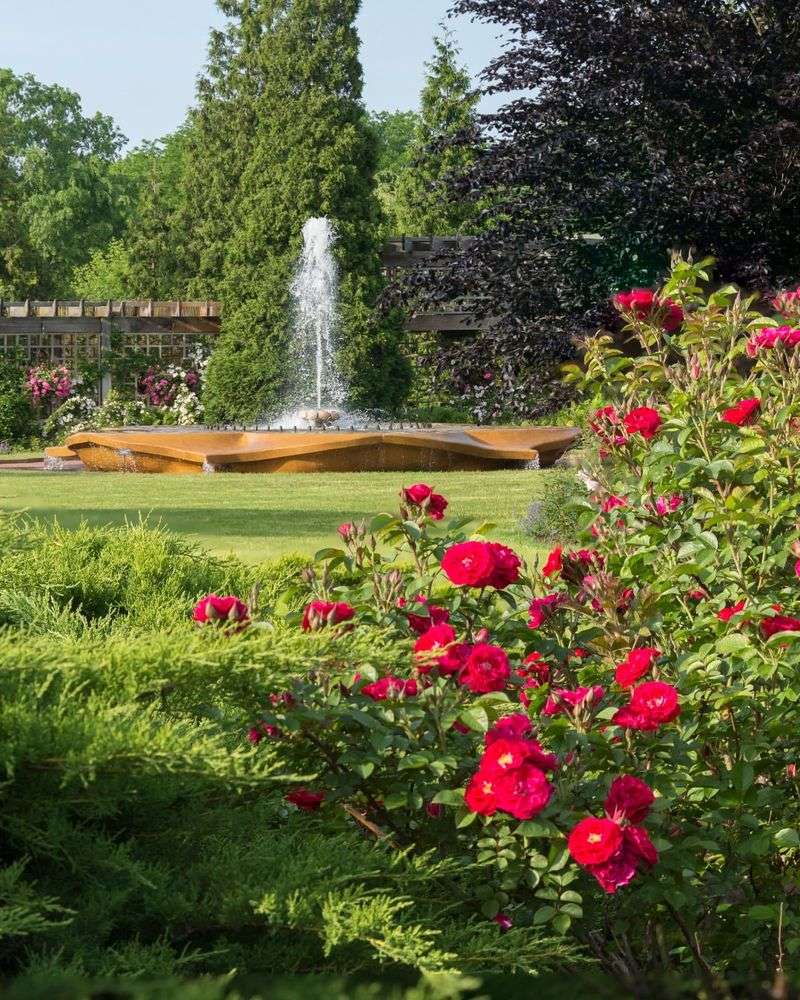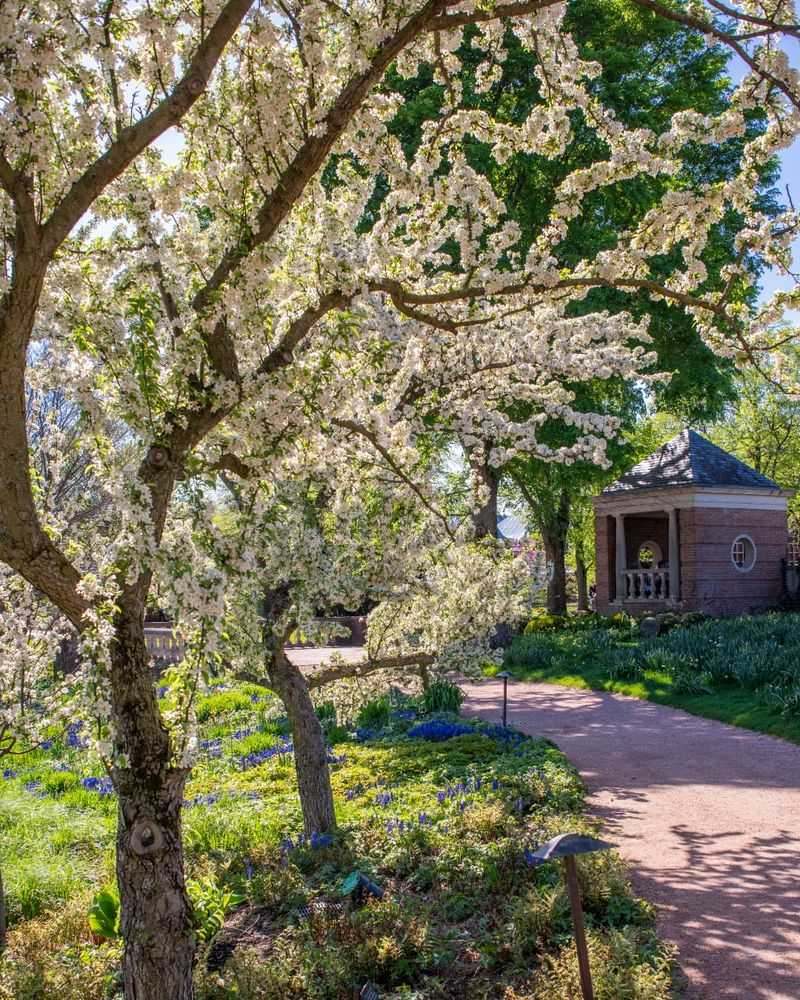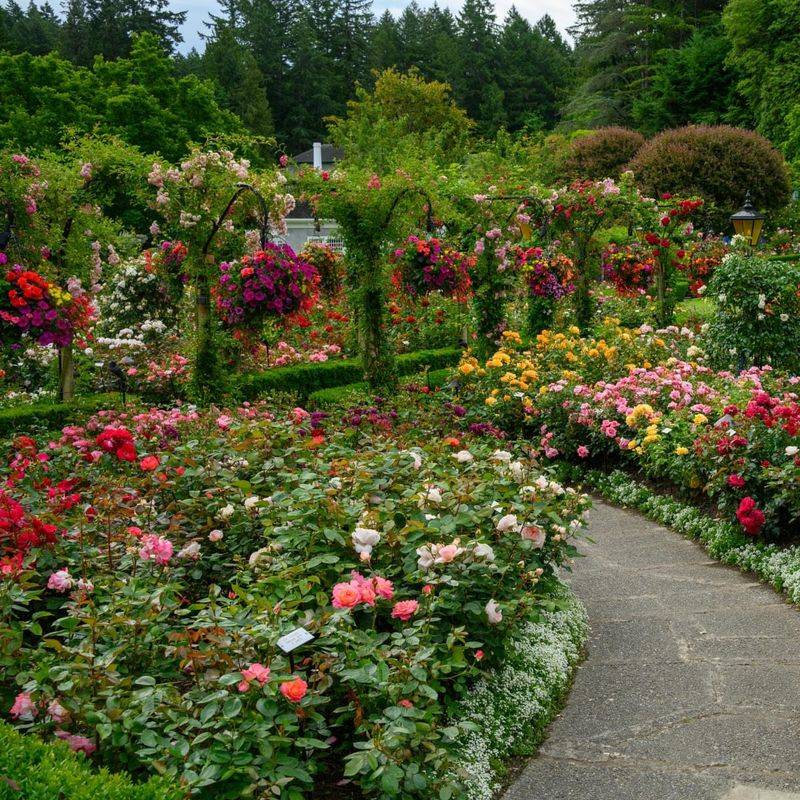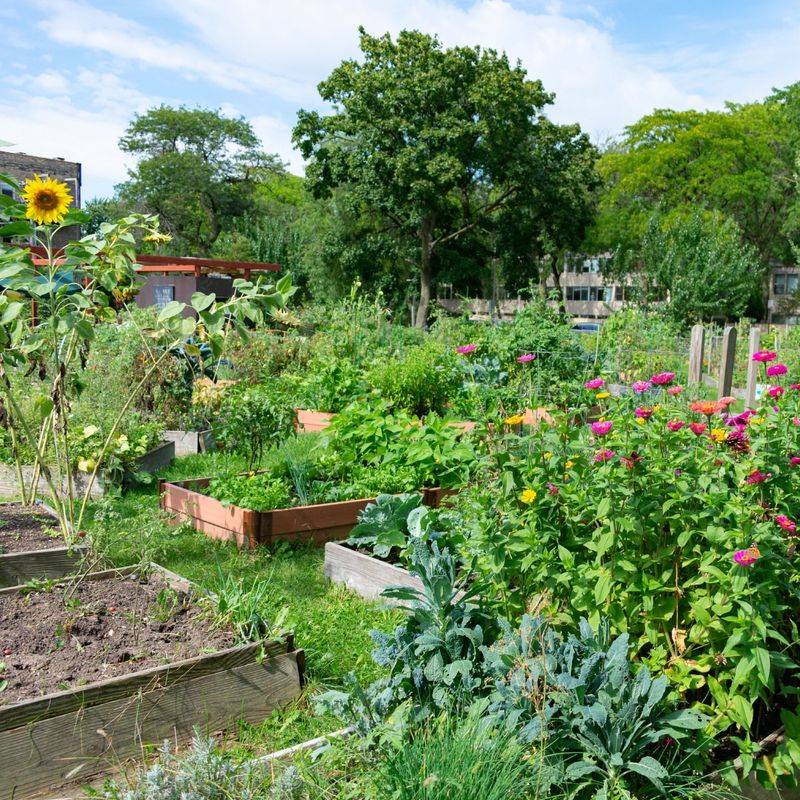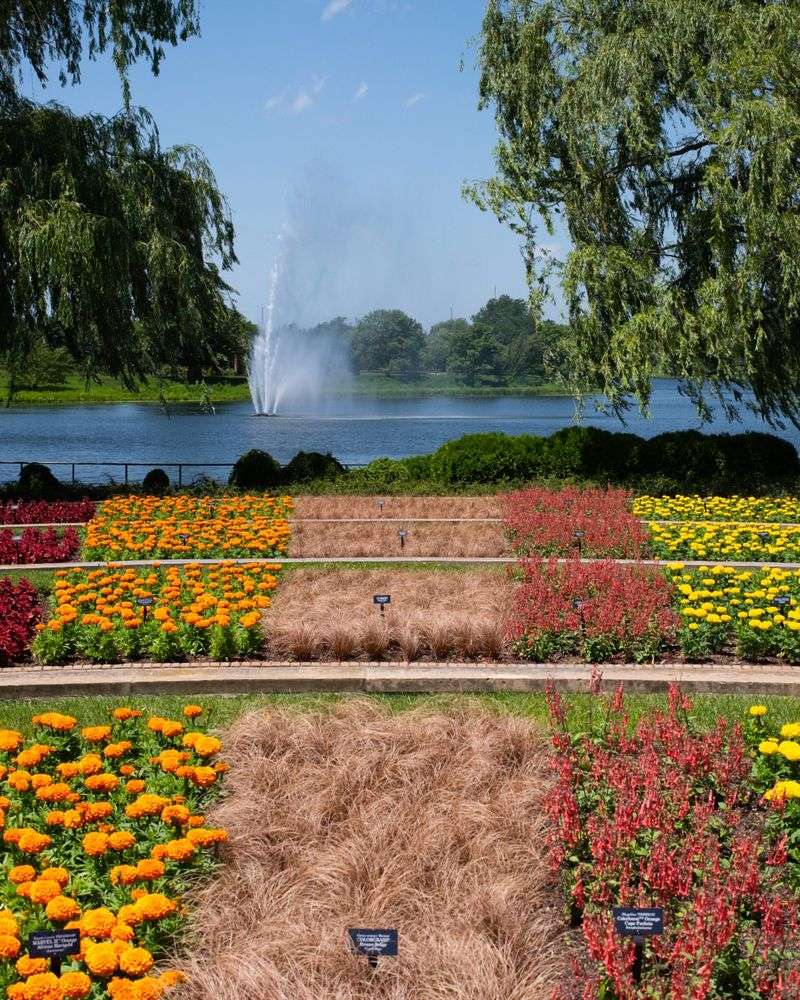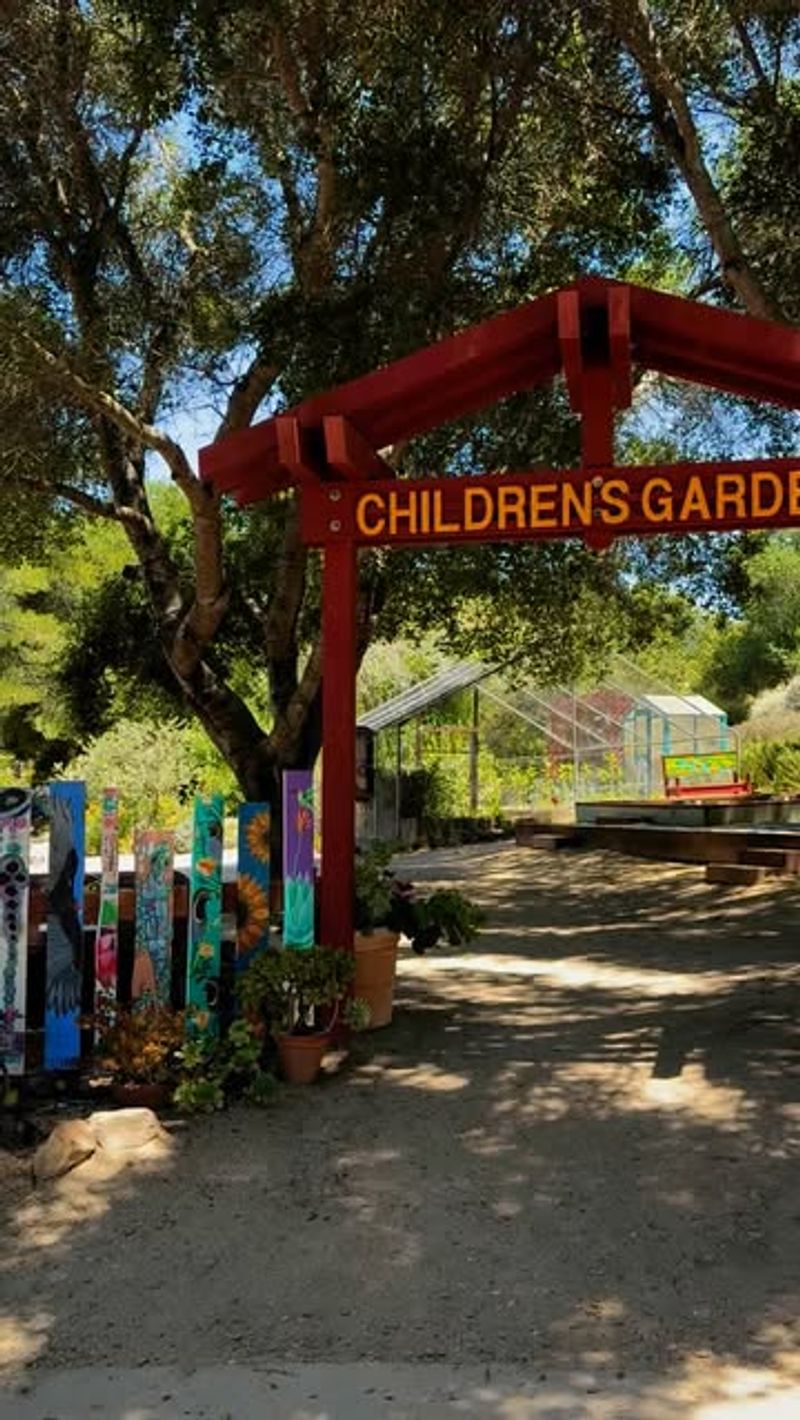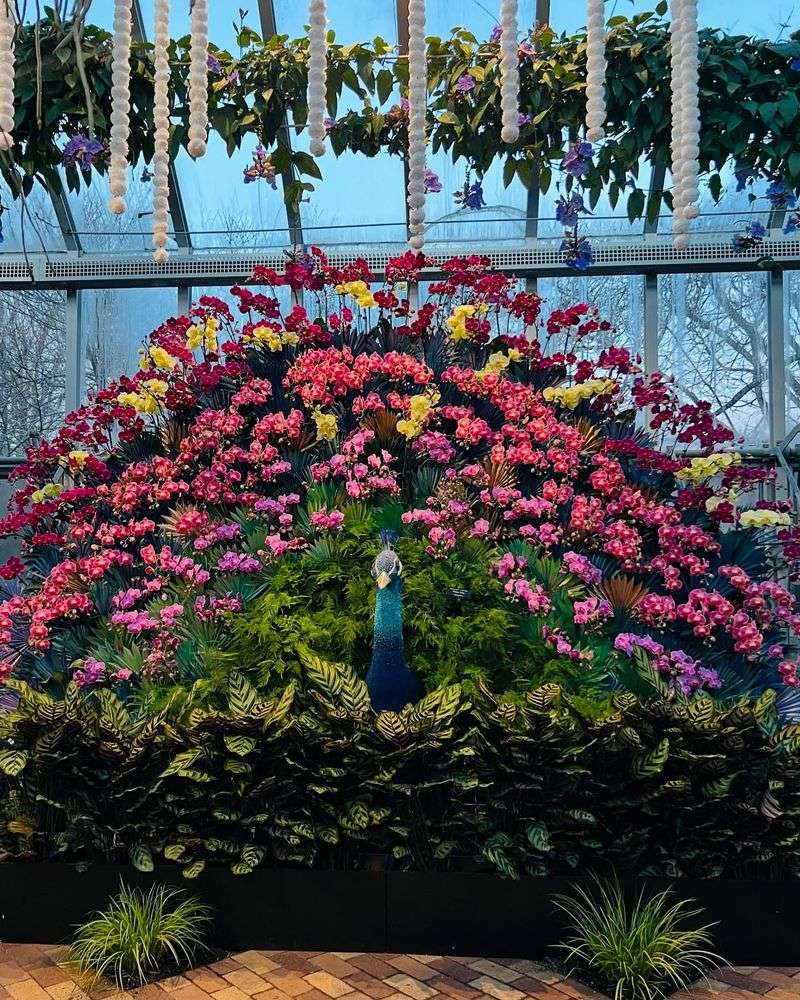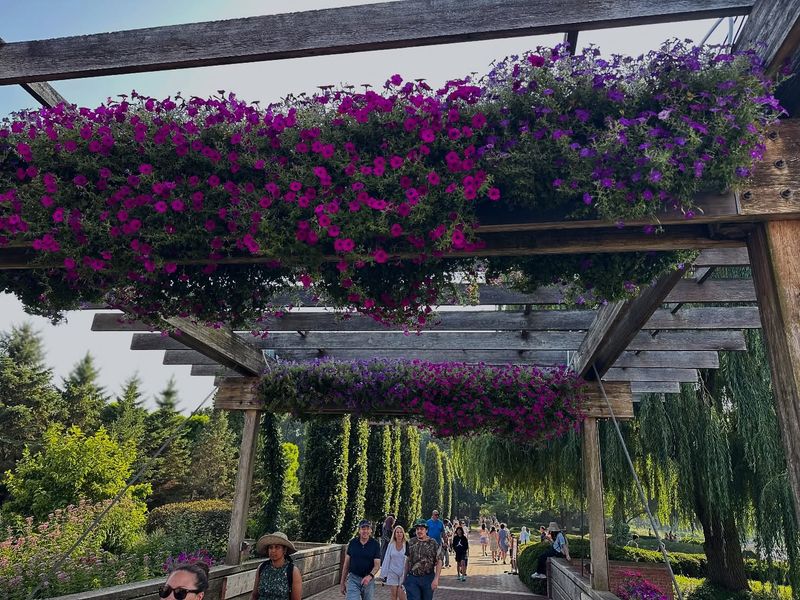The Chicago Botanic Garden stands as an impressive natural sanctuary in Glencoe, Illinois, just north of Chicago. Spanning 385 acres, this meticulously designed landscape features 27 distinct gardens and four natural areas, all situated on and around nine islands.
Established in 1972, the garden welcomes nearly one million visitors annually who come to explore its diverse plant collections and peaceful settings. During my recent spring visit, I was struck by how each area tells its own botanical story while contributing to the garden’s conservation and education mission.
From serene Japanese islands to vibrant seasonal displays, the garden offers something different in every season. Here are ten must-see attractions that showcase the remarkable diversity and beauty of this world-class botanical institution.
1. The Japanese Garden Islands
Three islands form the heart of Sansho-En, one of the most authentic Japanese gardens outside Japan. The largest island represents the material world, while the other two symbolize the spiritual realm.
My morning visit here proved perfect timing – fewer visitors meant uninterrupted reflection by the koi pond. The carefully placed stones, pruned pines, and zigzag bridges create a landscape that changes dramatically with each season.
Fall brings spectacular color when Japanese maples turn brilliant red, making October an especially magical time to visit this tranquil space.
2. Seasonal Blooms At The Regenstein Center
Year-round flower displays flourish inside this glass-enclosed wonderland regardless of Chicago’s notorious weather. The center transforms completely with each season – spring bulbs give way to summer tropicals, followed by fall chrysanthemums and winter poinsettias.
Walking through during February was particularly uplifting. While snow blanketed the outdoor gardens, inside I found myself surrounded by orchids in full bloom, their exotic shapes and colors providing a welcome escape from winter.
The greenhouse staff regularly change displays, ensuring something fresh awaits even frequent visitors.
3. Rare Collections In The Plant Science Conservatory
Hidden gems await in this research-focused facility housing some of the rarest plant specimens in the collection. Unlike showier parts of the garden, this area emphasizes conservation and scientific importance.
During my exploration, a staff botanist pointed out an endangered cycad that predates dinosaurs. These living fossils represent plant lineages that have survived millions of years virtually unchanged.
The conservation work happening here supports global efforts to preserve biodiversity, with scientists collecting and banking seeds from threatened plant species around the world.
4. Walking Trails Framed By Native Trees
Miles of accessible paths wind through native woodland areas, offering a glimpse of Illinois’ original landscape. Oak and maple canopies provide welcome shade during summer months, while spring brings wildflowers carpeting the forest floor.
The McDonald Woods section particularly impressed me with its restoration story. Once degraded by invasive species, dedicated efforts have returned this 100-acre woodland to ecological health.
Birders should bring binoculars – over 230 bird species have been spotted throughout the garden, with woodland areas offering the best chance to spot migratory warblers in spring.
5. The Rose Garden’s Expansive Displays
Thousands of roses create a symphony of color and fragrance in this meticulously maintained garden. Unlike formal European rose gardens, this space incorporates roses into a more naturalistic landscape design.
The collection spans heirloom varieties to modern hybrids, with special emphasis on those that thrive in the Midwest climate. I found myself lingering by the ‘Julia Child’ roses, their buttery yellow blooms and surprising licorice scent completely unexpected.
Peak bloom typically occurs mid-June, though many varieties continue flowering through October thanks to careful deadheading by the dedicated horticulture team.
6. Edible Plantings In The Fruit & Vegetable Garden
Practical gardening inspiration abounds in this four-acre demonstration space showcasing everything from heirloom tomatoes to unusual fruit trees. The garden operates as a working farm with seasonal harvests donated to local food pantries.
Summer weekends often feature chef demonstrations using just-picked produce. Watching a local chef transform freshly harvested vegetables into a simple yet elegant dish gave me several ideas to try in my own kitchen.
The apple orchard section features varieties specifically developed for cold-climate growing, proving that even Midwestern gardeners can successfully grow a diverse range of fruits.
7. Water Features Surrounding The Landscapes
Water defines the garden’s geography, with 60 acres of lakes connecting the nine islands that form the heart of the property. These aren’t merely decorative – they serve as stormwater management systems and wildlife habitats.
Early morning visitors might spot great blue herons fishing along the shorelines. I watched one stand perfectly still for several minutes before striking with lightning speed to catch breakfast.
The Evening Island area offers spectacular sunset views across the water, with strategic placement of colorful perennials that seem to glow in the golden hour light.
8. Educational Spaces And Family Areas
Children discover gardening joy in the Grunsfeld Children’s Growing Garden, where hands-on activities encourage direct interaction with plants. Unlike traditional “look but don’t touch” gardens, this space invites exploration through all senses.
The Model Railroad Garden combines miniature trains with plant-based recreations of American landmarks. Watching families together, I noticed children captivated by the trains while adults appreciated the incredible detail in the plant-crafted buildings.
Weekend programming often includes scavenger hunts and nature art activities designed to foster the next generation of plant enthusiasts.
9. Seasonal Exhibits And Rotating Plant Displays
Temporary exhibitions keep the garden fresh throughout the year, from spring bulb festivals to summer butterfly habitats. The annual orchid show transforms February’s coldest days into a tropical escape with thousands of blooming specimens.
Summer evenings bring special light installations that transform familiar landscapes into magical nighttime experiences. Walking through the illuminated gardens after dark offered an entirely different perspective on spaces I thought I knew well.
Fall weekends feature the popular Night of a Thousand Jack-o’-Lanterns, showcasing intricately carved pumpkins created by professional artists along candlelit paths.
10. Looking Ahead: Future Expansions At The Garden
Ongoing development ensures the garden continues evolving with new areas currently under construction. The upcoming Bonsai Collection will feature specimens from one of North America’s finest private collections, some trees over 100 years old.
Climate change adaptation research shapes future plantings throughout the property. Staff horticulturists monitor which species thrive as growing conditions shift, providing valuable data for home gardeners facing similar challenges.
A planned expansion of the native prairie restoration area will add another 15 acres of habitat for declining pollinator species, further extending the garden’s conservation impact.

